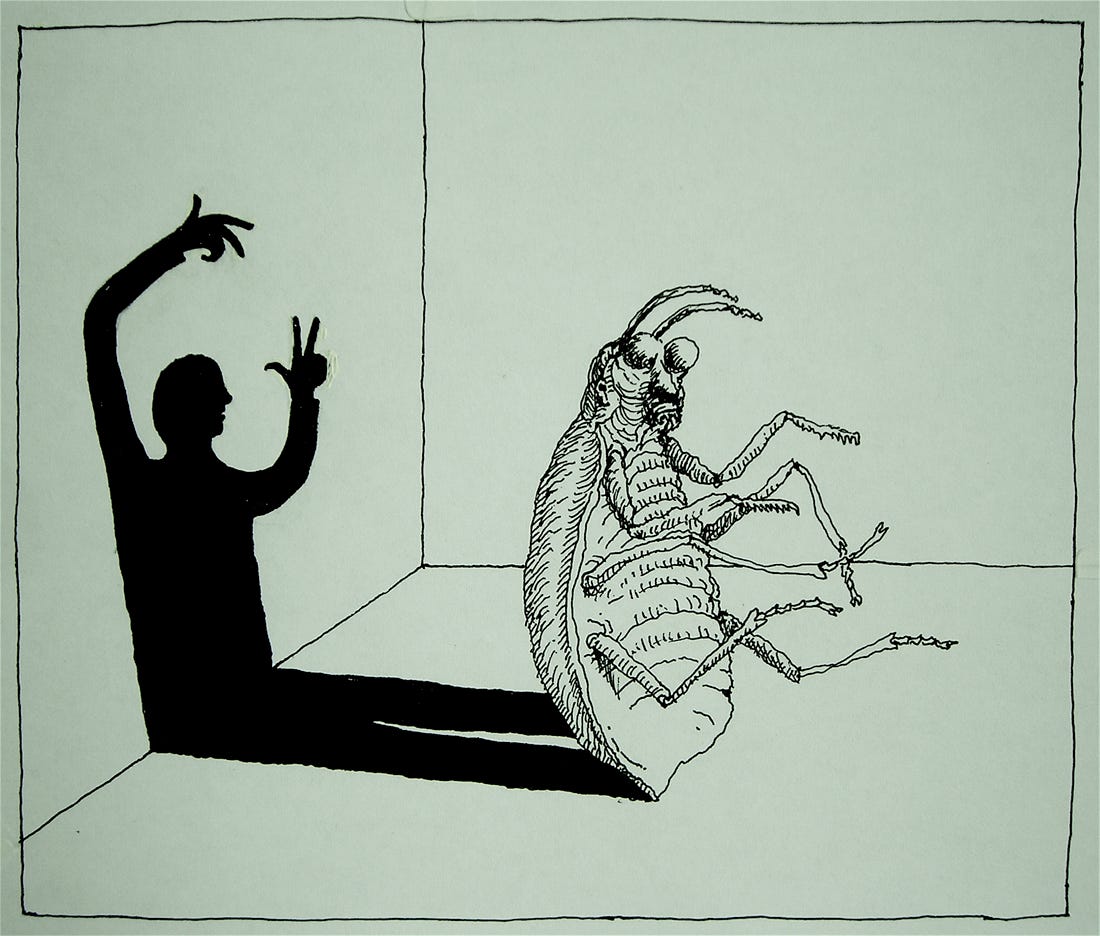Franz Kafka, the author of several literary works such as The Metamorphosis, The Trial, The Hunger Artist, The Castle, The Judgement etc. gave birth to a genre and a literary style called Kafkaesque, which means a situation of absurdness and a sense of confinement in a oppressive bureaucratic system. Kafka’s worlds often used unusual, bizarre and illogical symbolism to represent the functioning of the modern world.
For a very long time authors’ names have been used to describe certain situations and times. Orwellian, Byronian, Shakespearean, Dickensian and Kafkaesque are some of the popular ones. This is credited to their unique style of painting reality and their influence in the socio-cultural spheres throughout history. They have left behind footprints that later culturalists and authors follow and look up to.

On 3rd July, 1883 a child was born in a German speaking Jewish family in Prague. He was named Franz Kafka. He was the oldest of six children and son to an authoritarian father. Throughout Kafka’s life, he had a conflicting relationship with his father due to the man’s ill temper and lack of support for Kafka’s writing interests. His father often appeared in his writings as a representation of overwhelming despotic power.
Kafka was working in an insurance company, until he had to leave it due to tuberculosis. He was exhausted and tortured by the routine office life which caused his personal relationships to be neurotically disturbed. Kafka had Max Brod as his lifelong friend, who we have to thank for editing and publishing some of Kafka’s work and putting it out to the world, despite the author’s instructions to destroy them after his death.
Kafka’s writings have been called Kafkaesque. Merriam-Webster dictionary description of Kafkaesque is “of, relating to, or suggestive of Franz Kafka or his writings especially, having a nightmarishly complex, bizarre, or illogical quality.” In each of Kafka’s works, you would find elements of this build up of absurdness and irrationality.

‘The Metamorphosis’ is one of Kafka’s most well known and widely read books, published during his lifetime. From the very beginning of the book we find a kafkaesque situation as our protagonist, Gregor Samsa wakes up, one day, from troubled dreams and finds himself transformed into a giant insect. The story is almost an hour long and one could easily finish it in one sitting. It touches upon the feelings of alienation and isolation, which are very quotidian in Kafka’s world. As a human, Samsa was not very happy with the life he was living, constantly exhausted and trapped by the boredom of a routined life and obligations. His life did not change much as he metamorphosed into an insect. He was still trapped within the walls of his room and his family showed very little compassion. They were bureaucratically indifferent and emotionally distanced. His office manager’s visit too was a representation of the authoritarianism and oppression that Samsa felt. Samsa is found to be caged in a mechanical world revolving around him, unable to escape.

‘The Hunger Artist’, another one of Kafka’s short stories, produces a similar sense of absurdness and confinement. Living in a cage, the protagonist is a man who starves himself for the entertainment of the public. He takes pride in his art of starvation and desires to attract as much audience as possible. Over time however, his fame declines as people start losing interest. When he joins the circus, his life becomes one of isolation and detachment. He watches people ignore his presence and a sense of loneliness sets into the skin of the hunger artist. He dies of his starvation only to be replaced by a zealous panther who felt freedom even within the bars of the cage. The story is Kafkaesque in its portrayal of a passionate artist whose pain becomes only a cage to pass by just to reach the actual attraction.

‘The Trial’ is one of Kafka’s long fiction works and revolves around a character called Joseph K. and his trial against a crime he himself is unaware of. The book shows a complex bureaucratic structure within which K. finds himself trapped. Yet again, we find common themes of alienation and isolation, combined with absurdity and irrationality. As K. explores the bureaucracy of the legal system, he finds out how surreal and irrational it is. The book allows us to question the existential anxieties and the meaning of life as one faces the oppressiveness of the modern system.
Kafka’s style of writing probably developed as a result of his life experiences- his authoritarian father, the monotonous work life and his poor health conditions. Writing worked as an escape for the author and thus, we find the reflections of his feelings in his stories. The characters mentioned in the above three all struggled through oppressive and isolating realities, just like Kafka had, until they faced their inevitable deaths.
Kafka’s contribution to the world of literature is immense. He did not just develop his own style of writing which influenced several contemporary writers, such as Albert Camus, Haruki Murakami, Jorge Luis Borges and Jean-Paul Satre, but also brought about a philosophy that allowed us to look at the world from a different perspective. Kafka gave life to a nightmarish genre, a cage of absurd, strange and oppressive phenomena that one cannot escape. You can only strive through it. That is the essence of Kafkaesque, surviving through a nightmare world. That is the genius creation of Franz Kafka.
Zakia Tasnim Ahmed is a student pursuing Psychology Honours from Jamia Millia Islamia.
Edited by: Ambrisha Zubeen






GIPHY App Key not set. Please check settings